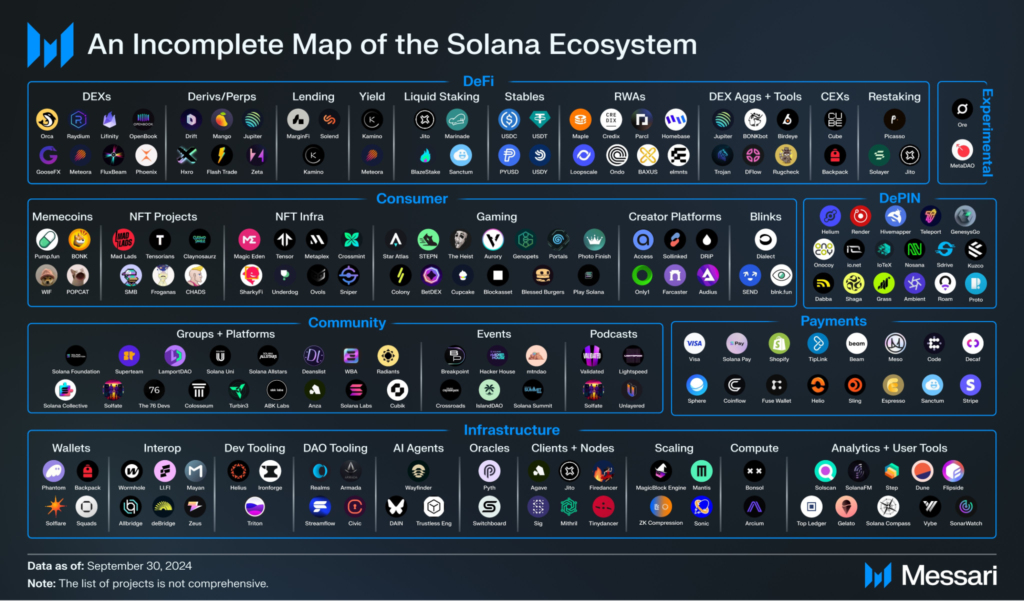The Blockchain Ecosystem in 2025 is projected to be a vastly different landscape compared to its nascent stages․ Expect to see a world where decentralized applications (dApps) are commonplace, and blockchain technology is seamlessly integrated into various aspects of daily life, from supply chain management to digital identity verification․ This expansion will be driven by increased adoption across industries and the maturation of underlying technologies, making the Blockchain Ecosystem more accessible and user-friendly for both developers and end-users․ The convergence of blockchain with other cutting-edge technologies like AI and IoT will further unlock new possibilities and reshape the future of digital interactions․
Key Components of the 2025 Blockchain Ecosystem
The blockchain ecosystem is a complex and interconnected web of technologies, applications, and stakeholders․ By 2025, several key components will have solidified their roles and achieved greater maturity:
- Layer-1 Blockchains: The foundational blockchains like Ethereum, Solana, and Cardano will continue to evolve, focusing on scalability, security, and interoperability․ Expect to see advancements in consensus mechanisms and smart contract platforms․
- Layer-2 Solutions: Scaling solutions like rollups and sidechains will become increasingly crucial for handling the growing transaction volume and reducing congestion on Layer-1 blockchains․
- Decentralized Applications (dApps): dApps will become more sophisticated and user-friendly, offering a wide range of services in areas like DeFi, gaming, social media, and content creation․
- Decentralized Finance (DeFi): DeFi protocols will mature, offering more diverse and sophisticated financial instruments and services, including lending, borrowing, trading, and insurance․
- Non-Fungible Tokens (NFTs): NFTs will continue to evolve beyond digital art and collectibles, finding applications in areas like supply chain management, identity verification, and ticketing․
- Oracles: Oracles will play a critical role in connecting blockchains to real-world data, enabling smart contracts to interact with external information and events․
- Wallets and Infrastructure: User-friendly wallets and robust infrastructure will be essential for facilitating the adoption of blockchain technology by mainstream users․
Trends Shaping the Future of Blockchain
Several key trends are expected to shape the future of the blockchain ecosystem in the coming years:
- Interoperability: The ability for different blockchains to communicate and interact with each other will be crucial for unlocking the full potential of the technology․
- Sustainability: Concerns about the environmental impact of blockchain technology will drive the development of more energy-efficient consensus mechanisms and sustainable practices․
- Regulation: Clear and consistent regulatory frameworks will be essential for fostering innovation and adoption while protecting consumers and investors․
- Enterprise Adoption: More and more enterprises will adopt blockchain technology to improve efficiency, transparency, and security in their operations․
- Decentralized Autonomous Organizations (DAOs): DAOs will become more sophisticated and widely used for managing decentralized communities and projects․
Comparative Table: Blockchain Platforms in 2025 (Projected)
| Platform | Focus | Scalability | Ecosystem Size | Adoption Rate |
|---|---|---|---|---|
| Ethereum | General Purpose | High (with Layer-2) | Large | Very High |
| Solana | High Throughput | Very High | Growing | High |
| Cardano | Security & Sustainability | Moderate (Improving) | Moderate | Growing |
| Polkadot | Interoperability | High | Moderate | Growing |
FAQ: Blockchain Ecosystem in 2025
Here are some frequently asked questions about the blockchain ecosystem in 2025:
- Q: Will blockchain be mainstream by 2025?
A: While full mainstream adoption may still be a few years away, blockchain technology will be significantly more prevalent and integrated into various industries and applications․ - Q: What are the biggest challenges facing the blockchain ecosystem?
A: Key challenges include scalability, security, regulation, and user adoption․ - Q: How will blockchain impact traditional industries?
A: Blockchain has the potential to disrupt and transform various industries, including finance, supply chain, healthcare, and entertainment․ - Q: What skills will be in demand in the blockchain industry?
A: Developers, security experts, smart contract auditors, and business strategists with blockchain expertise will be in high demand․
Looking ahead to 2025, the evolution of the blockchain ecosystem promises to be transformative․ The continued innovation and adoption of this technology are poised to reshape how we interact with the digital world, offering new opportunities and challenges for individuals and organizations alike․ The future looks bright for the Blockchain Ecosystem and its potential to revolutionize various aspects of our lives․

